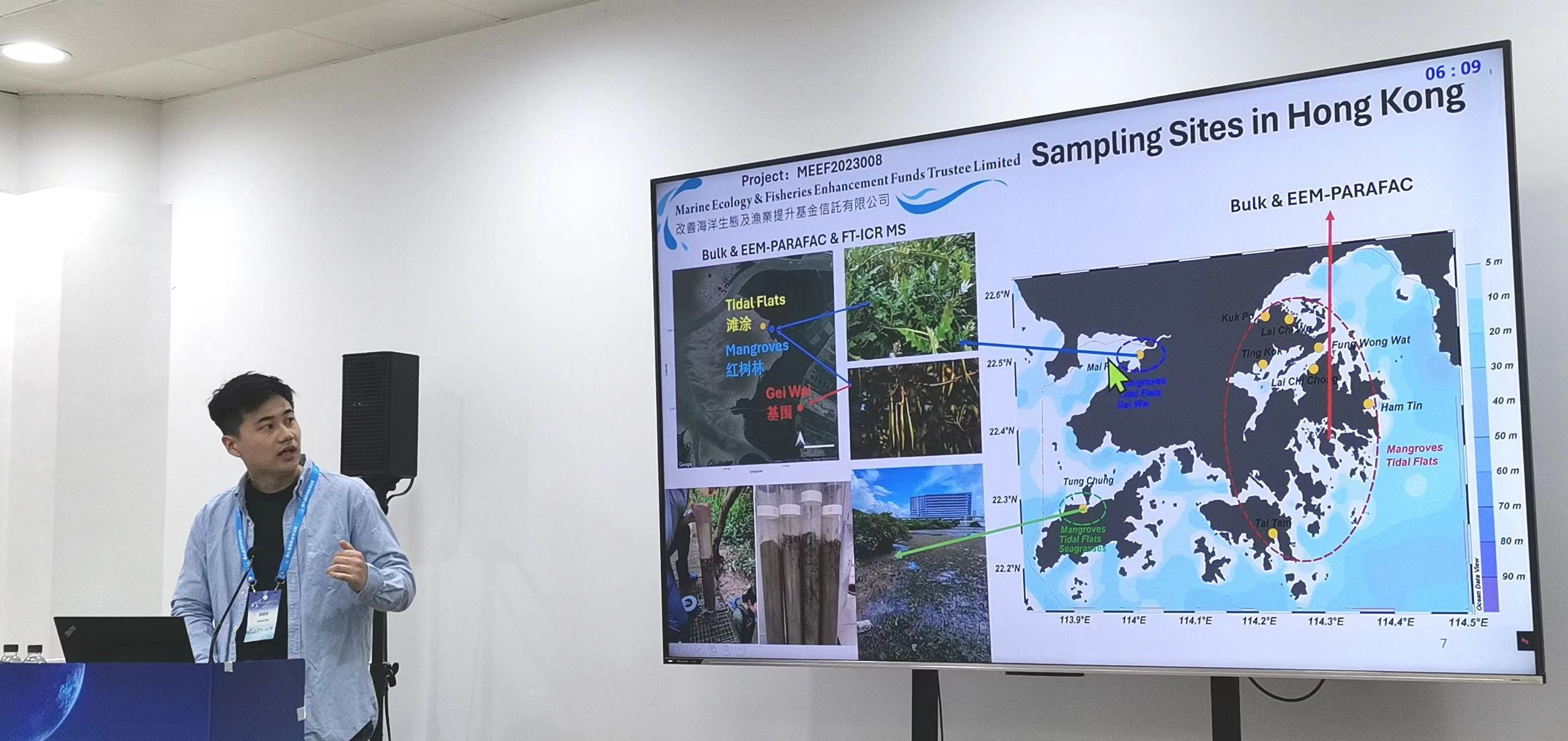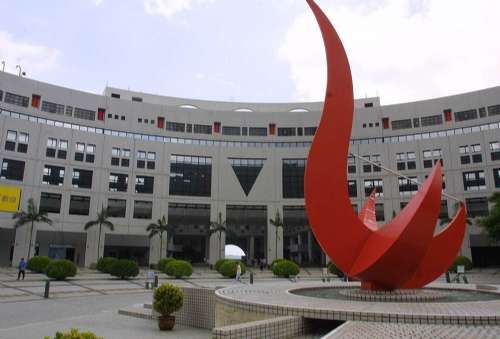Marine Ecology Enhancement Fund (MEEF)

Project Title: Evaluating the ecological impacts of microplastic pollution on blue carbon ecosystems in Hong Kong using molecular fingerprints
Purpose of the Project
This study aims to assess the ecological impacts of microplastic pollution on the sediment of Hong Kong’s blue carbon ecosystems, including mangroves, seagrass meadows, and tidal flats. We will use the most advanced and rapid Fourier-transform ion cyclotron resonance mass spectrometry (FT-ICR MS) technology to investigate the properties of microplastic-derived dissolved organic matter (DOM) on a molecular level. This approach will provide a precise understanding of the sources of DOM in sediment. Additionally, we will evaluate the ecological impacts of microplastic pollution on the sediment of Hong Kong’s blue carbon ecosystems by combining stable carbon and nitrogen isotopes of blue carbon ecosystems sediment with the DOM’s chemical and physical properties, this study will further. The results of this study will contribute to predicting and regulating material cycling in blue carbon ecosystems and informing the development of conservation and management policies for Hong Kong’s blue carbon ecosystems.
Objectives of the Project
Hong Kong has a lengthy coastline that supports a diverse range of blue carbon ecosystems (BCEs), including mangroves, seagrass meadows, and tidal flats. These BCEs serve multiple purposes, such as maintaining biodiversity, nurturing fisheries, protecting shorelines, promoting tourism, and facilitating public education and conservation research. Against the backdrop of global warming and national policies on carbon peaking and carbon neutrality, BCEs are also recognized as a natural means of carbon sequestration. Therefore, the conservation of BCEs holds great significance. As an international metropolis, Hong Kong experiences frequent human activity and urban development that can significantly impact the environment of BCEs, particularly the composition of organic matter in sediments. Factors such as microplastic pollution can affect the health of BCEs. Plastics are organic polymers of high molecular mass and are generally resistant to decomposition. Thousands of polymers over a wide range of densities and textures have been synthesized in recent decades. Peri-urban coastal areas are regarded as major reservoirs of plastics, mainly in the form of microplastics. As carbon-rich (C-rich) components, the C content of different microplastic ranges from 38 to 92%, and microplastics can release DOM into the aquatic environment through leaching. According to recent estimates, the annual leaching of DOM from marine plastic waste can reach 23,600 tons. Assessing how these microplastic-derived DOM affect the environment and nutrient cycles of BCEs is challenging. This has hindered the efforts of the government, academia, and industry in BCEs conservation. Therefore, scientific research is needed to develop precise diagnostic methods. This will provide insights into the differences in organic composition across BCEs and offer opportunities to trace the sources of anthropogenic organic pollutants. DOM in BCEs sediments is an effective indicator of organic matter composition, making it an ideal indicator for assessing anthropogenic impacts on BCEs. By utilizing FT-ICR MS, we can obtain precise information about the molecular composition of sediment DOM. The resolution of FT-ICR MS can reach up to 10-6, and the mass precise can up to 0.2 electron mass, allowing for accurate analysis of DOM molecular formulas. This helps us understand the types and characteristics of DOM molecules, enabling us to trace the sources of microplastic-derived DOM molecules and the consequences of anthropogenic influences more accurately. Through our investigation of microplastic DOM in Hong Kong BCEs, we hope this project will raise public awareness of the potential impacts of microplastics on the marine environment. By conducting outreach to different social groups and organizing seminars, we also aim to inform the public about the use of new technologies by the scientific community to assess the environmental impacts of microplastics in BCEs.
Our study will monitor four important BCEs in Hong Kong (Mai Po, Tung Chung, Ting Kok, and Shui Hau). The proposed project has the following objectives.
Objective 1: To investigate the physicochemical and optical properties and DOM content of different BCEs sediments.
Objective 2: To explore the molecular properties of DOM in BCEs sediments and the molecular properties of DOM from microplastic-derived DOM and calculate their contribution.
Objective 3: To detect the microplastic-derived DOM in different wetland sediments.
Objective 4: To evaluate the contribution of microplastics in BCEs sediments in the carbon and nutrient cycle of Hong Kong’s coastal areas, raise public awareness of the potential impacts of microplastics on the marine environment, and to provide decision support and a baseline for the government and related stakeholders.
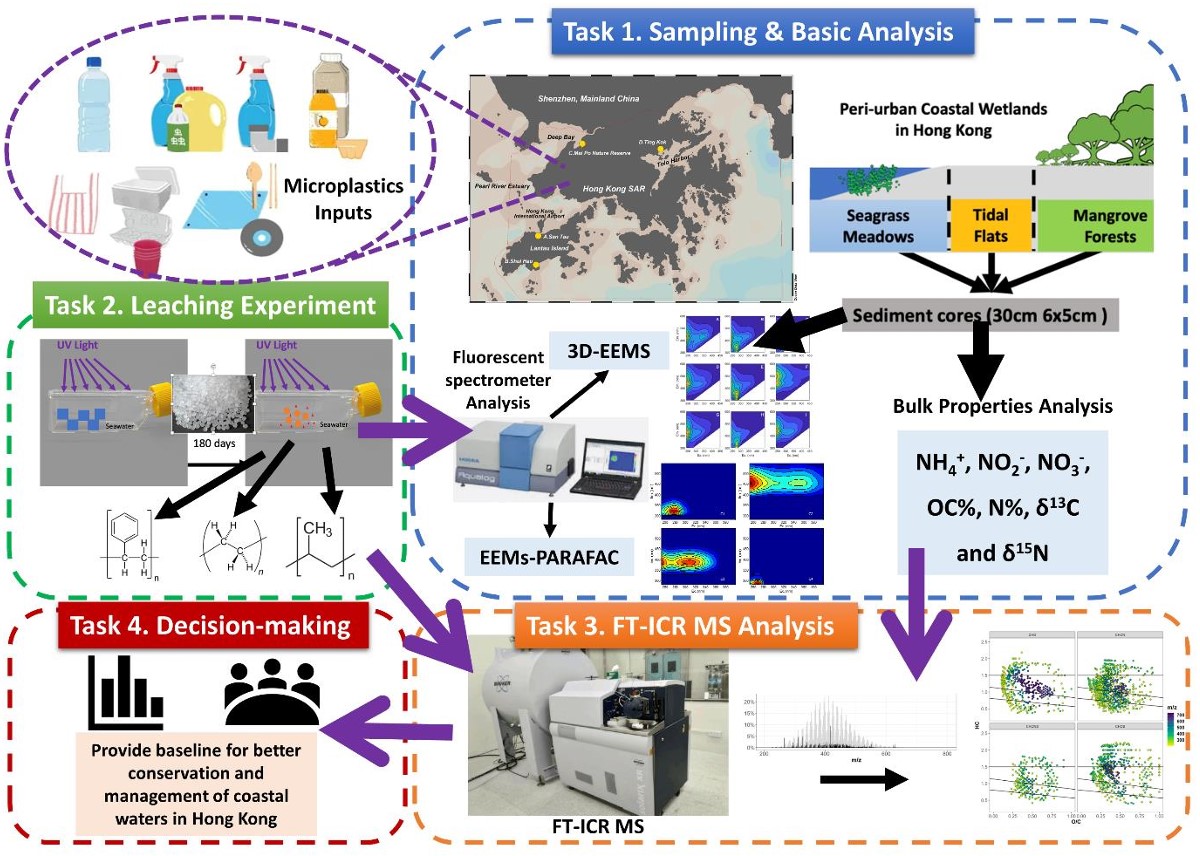

Sampling map for this proposed MEEF project Sampling sites are mainly located in four representative BCEs in Hong Kong: (A) San Tau, (B) Shui Hau, (C) Mai Po Nature Reserve, and (D) Ting Kok.
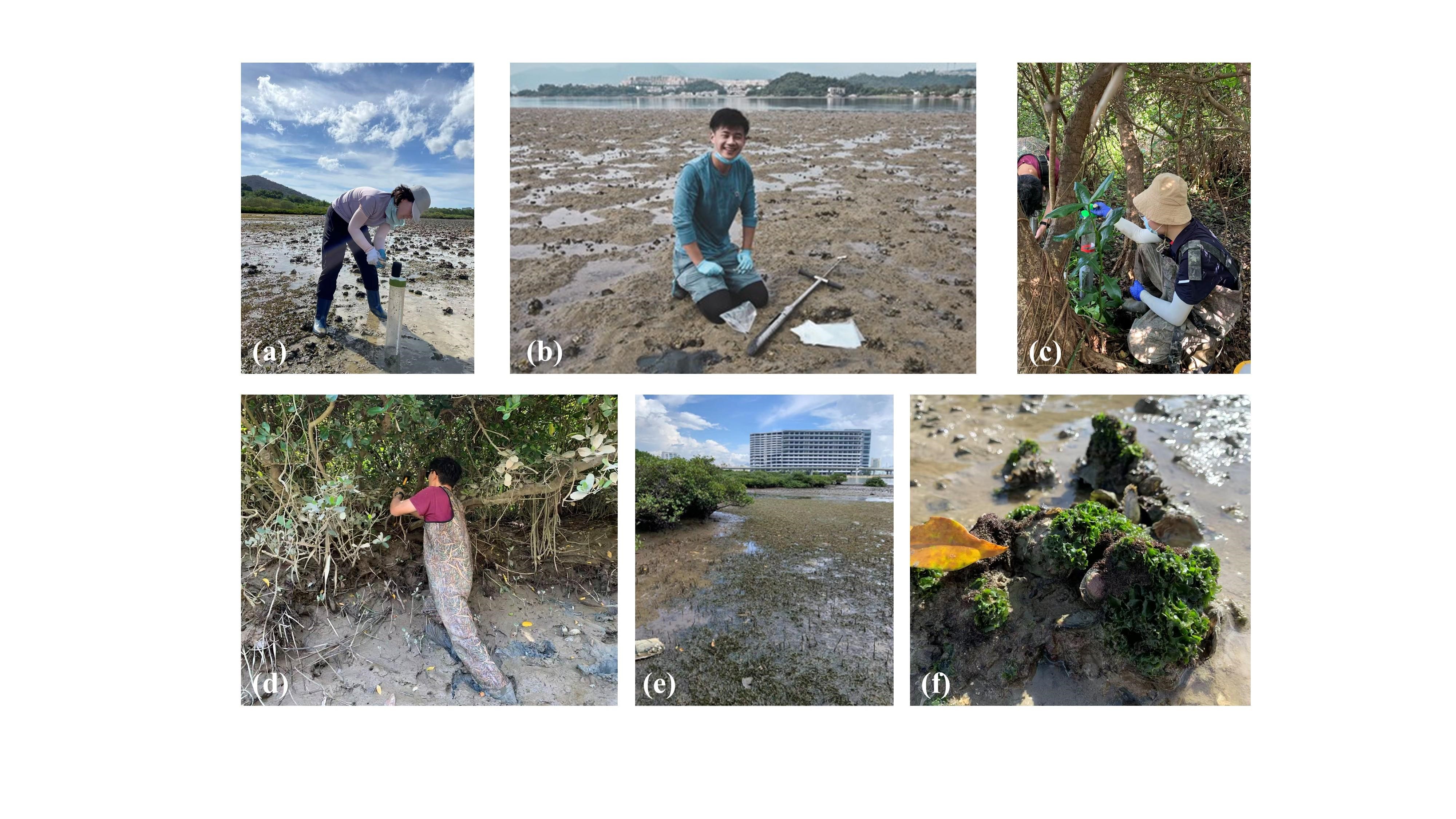
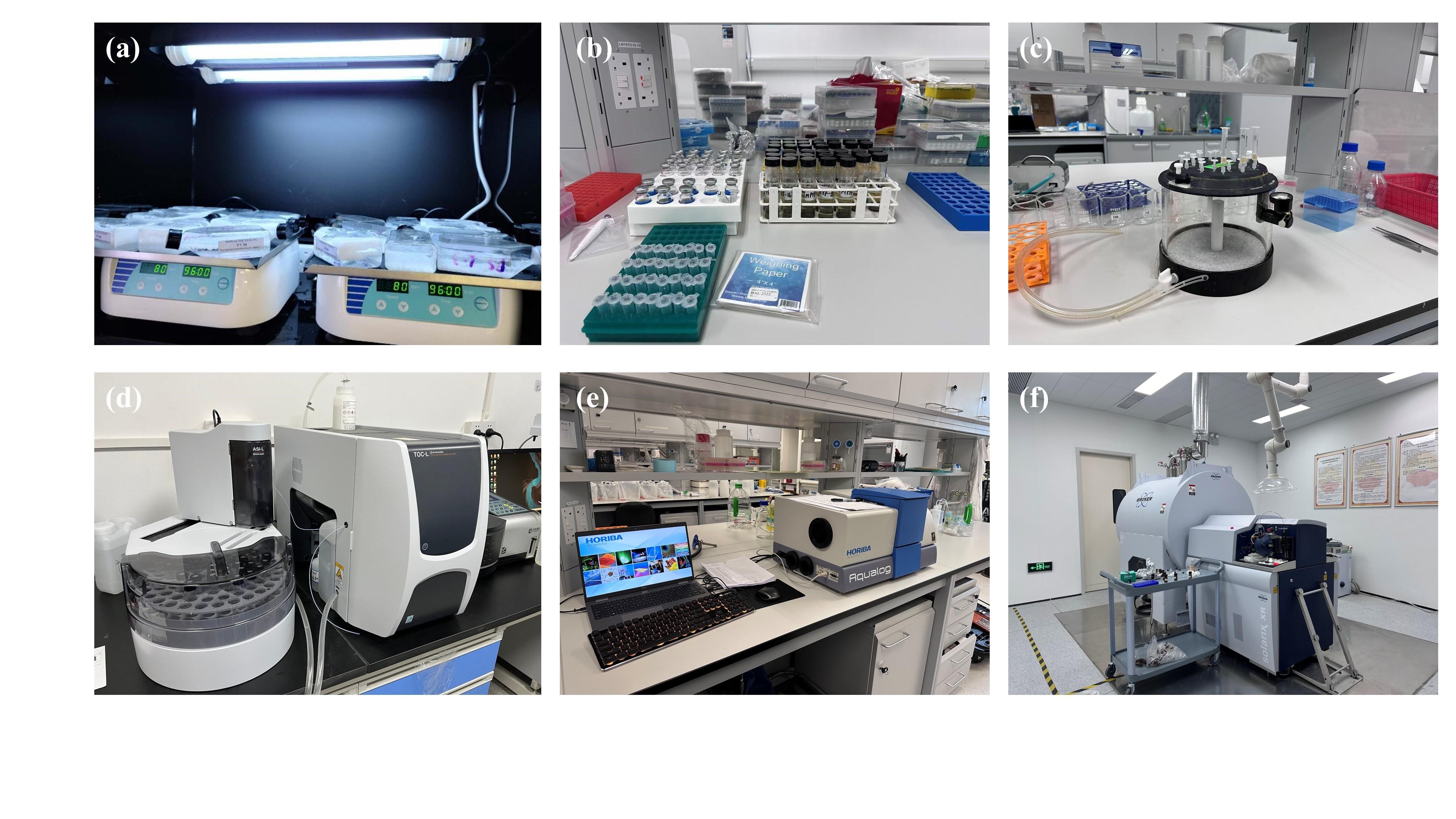
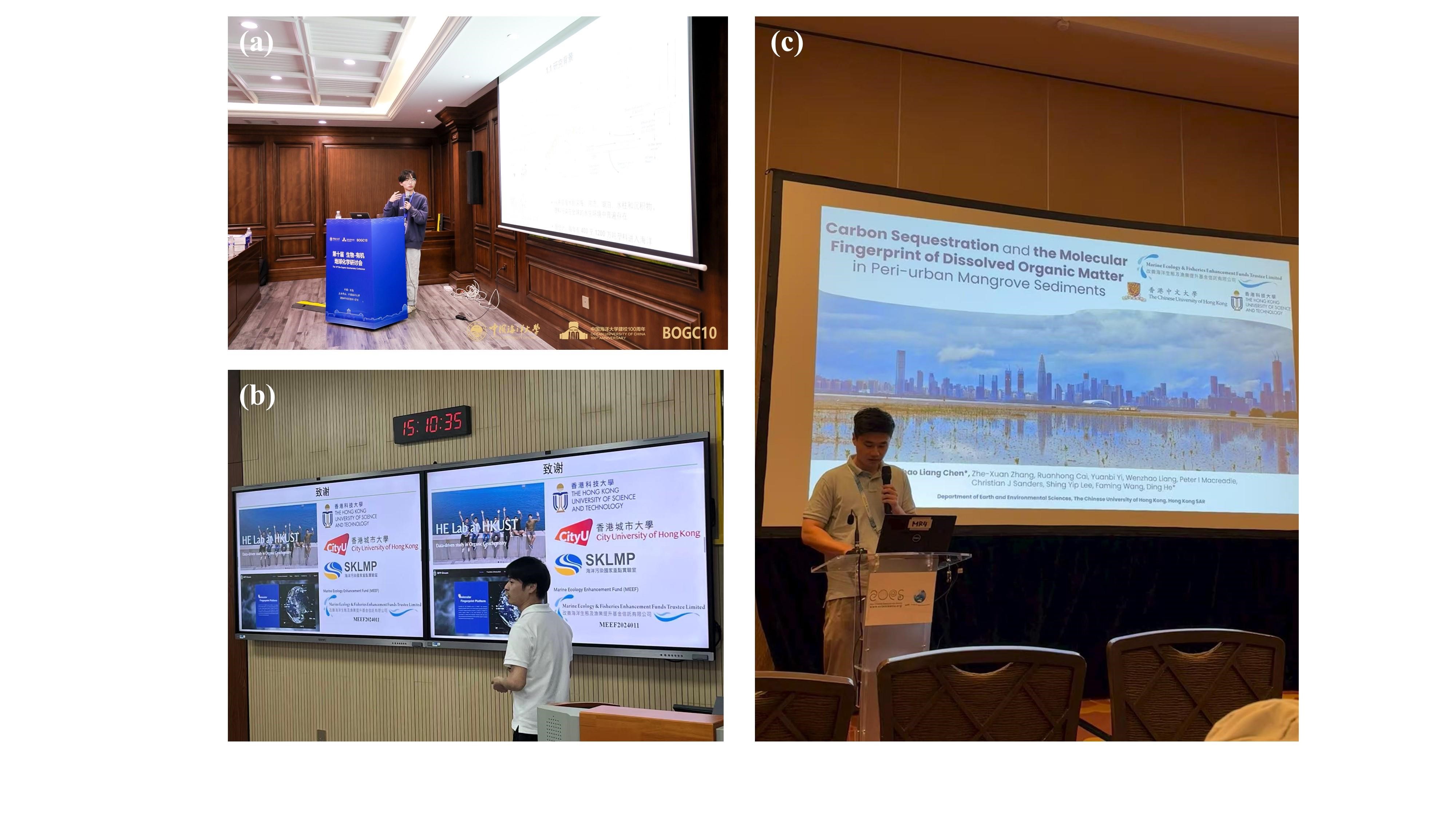
Assessing the ecological impacts of anthropogenic activities on the coastal wetlands in Hong Kong from the optical properties of sedimentary dissolved organic matter.
This project aims to assess the ecological impact of anthropogenic activities (e.g., sewage, fuel oil, and microplastic pollution) on the sediments of Hong Kong coastal wetlands (e.g., mangroves, seagrass meadows, and tidal flats), by monitoring the optical and biochemical properties of sedimentary dissolved organic matter (DOM) in the coastal wetlands. Using the most advanced and rapid fluorescence spectrometer, the study will trace the source of DOM—an indicator of ecosystem health—in the sediment. In addition, by combining the carbon and nitrogen stable isotopes, chemical and physical bulk properties of DOM and the socio-economic parameters, the ecological impact of anthropogenic activities (e.g., sewage, fuel oil and microplastic pollution) on the sediments in the coastal wetlands of Hong Kong will be also evaluated. The results will provide a theoretical basis for predicting and regulating the material cycle in the coastal wetlands, as well as formulating policy on the conservation and management of the Hong Kong coastal wetland ecosystem.
Objectives of the Project
Hong Kong has a long coastline supporting a variety of coastal wetlands (e.g., mangroves, seagrass meadows, and tidal flats). These coastal wetlands provide multiple functions, such as sustained biodiversity, fisheries nursing, shoreline protection, tourism and education. Under the background of global warming and national carbon peak and carbon neutral policies, coastal wetlands are also considered as a natural way to sequestrate carbon. Although they occupy only 0.5% of the global seafloor area, they fix ~50% of the global oceanic carbon. Therefore, the conservation of coastal wetlands is very important.
As an international metropolis, Hong Kong has frequent human activities and urban construction, which likely affect the environment of coastal wetlands significantly, especially the composition of organic matter in sediments. Sewage, microplastics, and even fuel oil pollution can all affect the health of coastal wetlands. However, it is challenging to assess how these anthropogenic activities affect the environment and nutrient cycle of coastal wetlands. This has hindered the efforts of government, academia, and industry in coastal wetland conservation. Therefore, scientific research is needed to develop a rapid and efficient diagnostic approach. This will not only provide insight into the differences in organic composition across coastal wetlands, but also offer an opportunity to trace the source of anthropogenic organic pollution.
Dissolved organic carbon (DOM) in coastal wetland sediments is an effective indicator of the composition of organic matter. Industrialization and urbanization have led to a large input of allochthonous DOM in the coastal environment, further complicating the composition and properties of DOM. This makes DOM an ideal indicator for assessing anthropogenic impacts on coastal wetlands. The development of three-dimensional excitation-emission matrix (3D-EEM) fluorescence spectroscopy has allowed us to measure the composition of sediment DOM in a few minutes without complex sample preparation.
Four important coastal wetland areas in Hong Kong (Deep Bay, North Lantau, South Lantau, and Tolo Harbour) will form our study area. The proposed project has the following objectives.
Objective 1: To monitor the physicochemical properties and DOM content of different coastal wetland sediments.
Objective 2: To monitor the optical properties of DOM in coastal wetland sediments and to develop a 3D-EEM method to trace anthropogenic inputs and calculate their concentrations semi-quantitatively.
Objective 3: To monitor the spatial and seasonal characteristics of DOM in different wetland sediments.
Objective 4: To assess the relationship between coastal wetland sediment DOM and socio-economic indicators such as surrounding population density and urban construction.
Objective 5: To assess the ecological value of coastal wetland sediments in the carbon and nutrient cycle of Hong Kong coastal areas, and to provide decision support and a baseline for the government and related stakeholders.


Sampling map for the MEEF project in Hong Kong. Study wetlands are represented by yellow dots. The red circle indicates that we collected sediment samples from only mangroves and tidal flats; the blue circle indicates that we collected sediment samples from mangroves, tidal flats and gei wai; and the green circle indicates that we collected sediment samples from mangroves, tidal flats, and seagrass meadows.
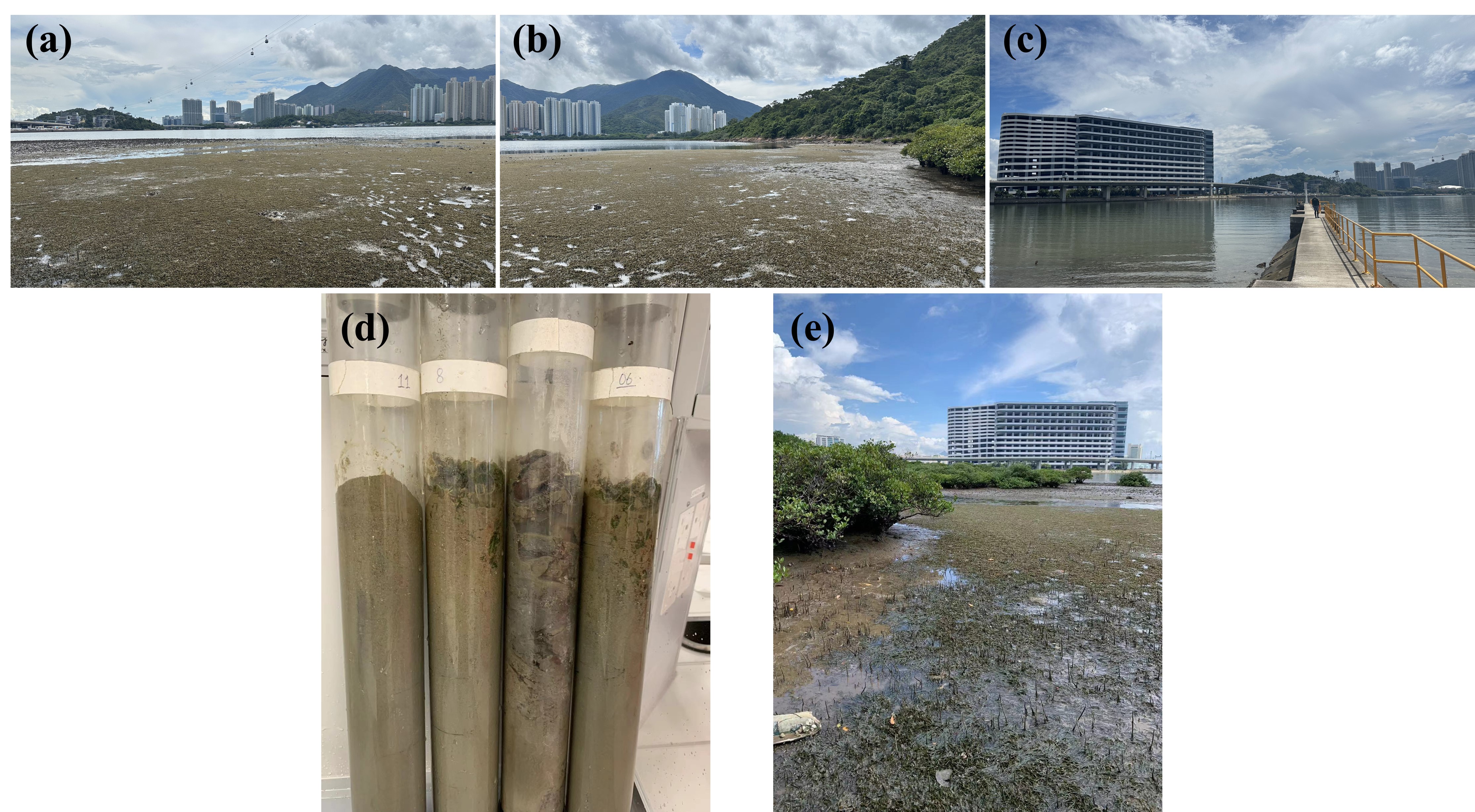
(a) Seagrass meadows in Tung Chung Bay; (b) Seagrass meadows, tidal flats and mangroves in Tung Chung Bay; (c) The airport construction project across from Tung Chung Bay; (d) Seagrass sediment cores from Tung Chung; (e) The airport construction project, seagrass meadows and mangroves in Tung Chung Bay.




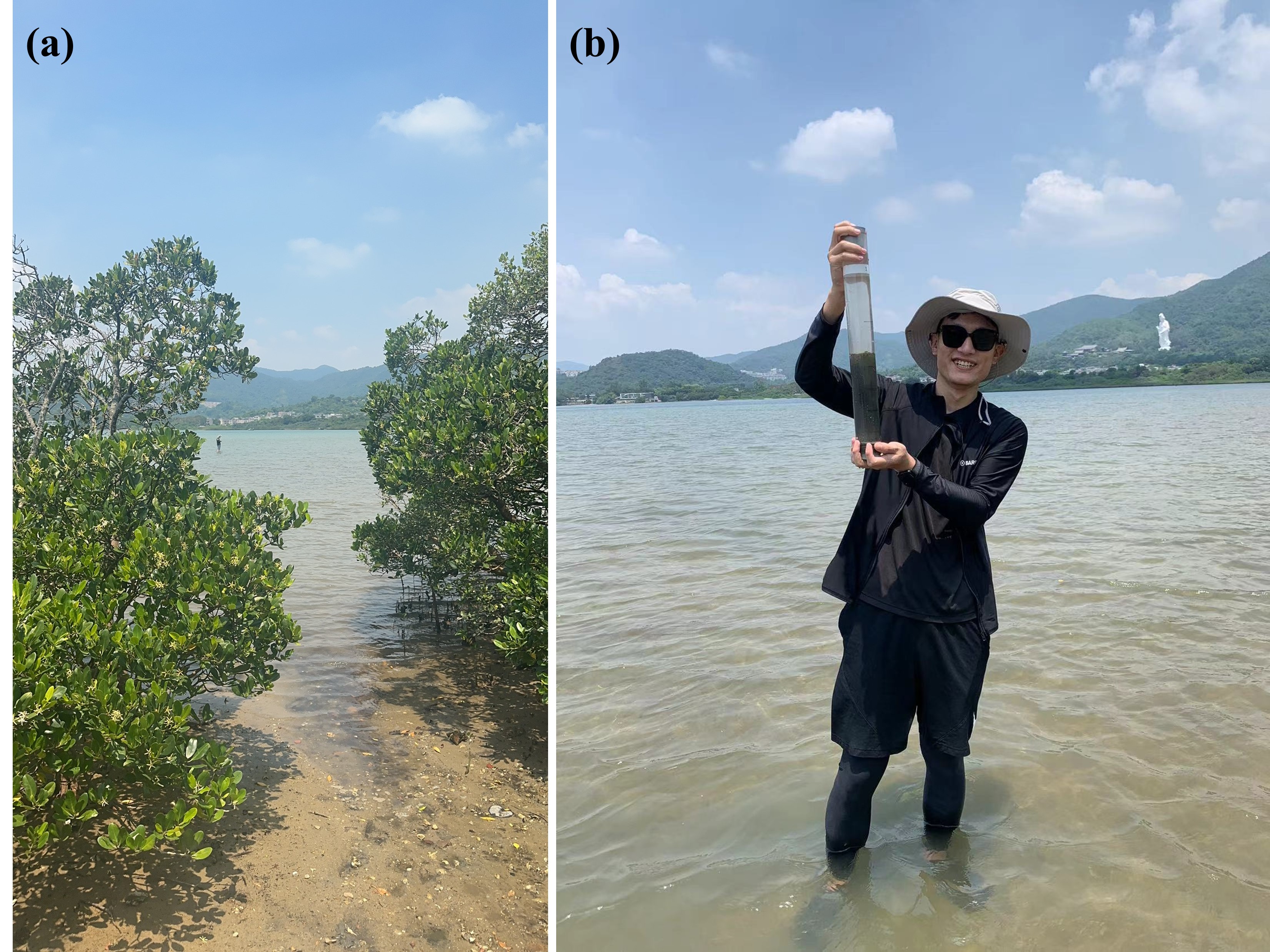

(a) Mai Po Nature Reserves; (b) Tida flats in Mai Po Nature Reserves; (c) Sample collecting in Mai Po; (d) Field work in Mai Po.
